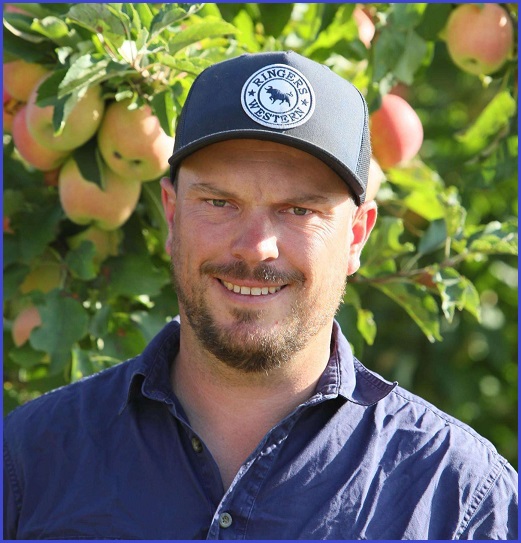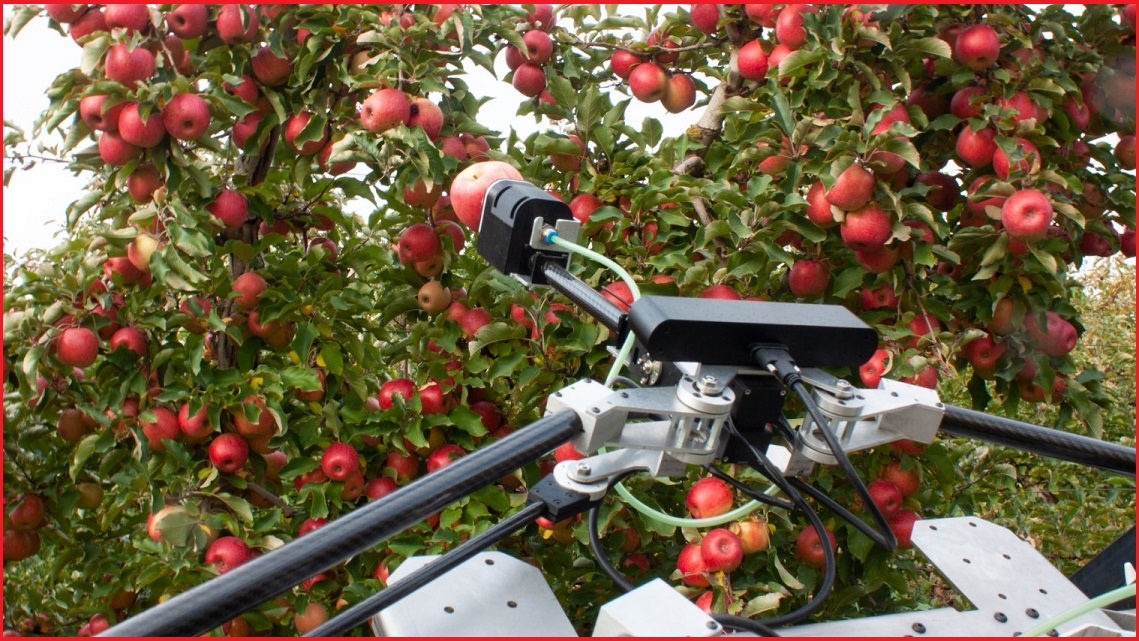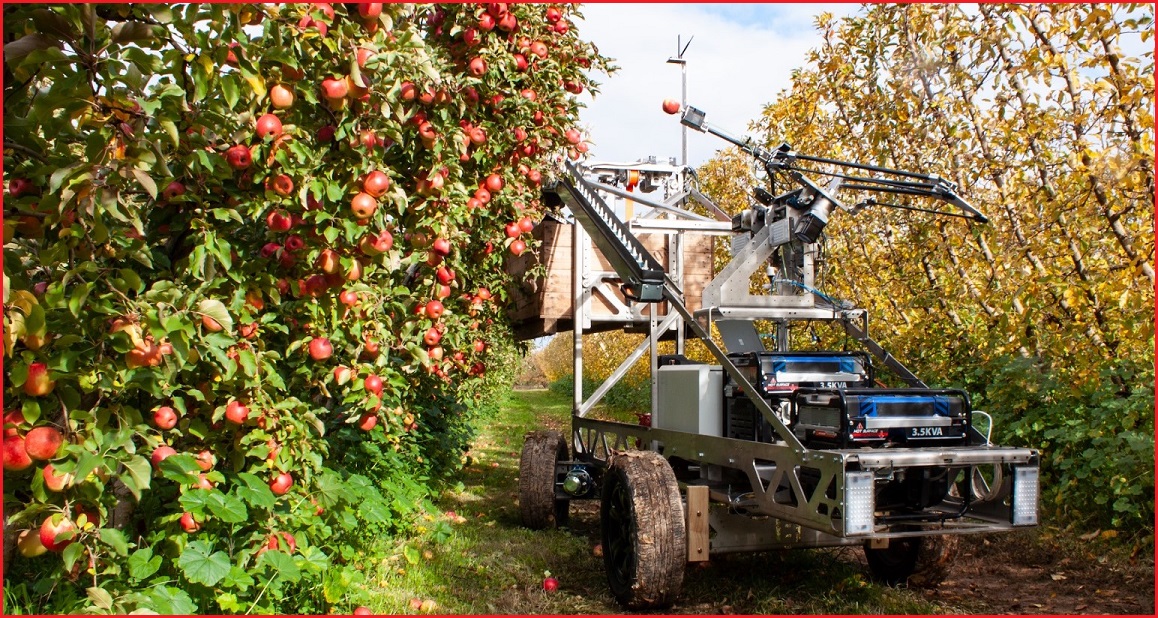A lack of workers, rotting fruit, COVID-19, and harsh weather conditions have left Australian farmers feeling exasperated.
Rather than leaving food to rot or trying to find people to pick, some are turning to robotics.
One major selling point for robots is that they can work around the clock and in conditions where humans cannot.
They can also undertake mundane tasks without the need for breaks or rest.
McNab Farms in Admona, Shepparton, Victoria has been producing apples, pears and stone fruits for over 120 years.
Fifth generation farmer and chair of Fruit Growers Victoria, Mitchell McNab’s interest in robotics peaked after he was selected to be part of an international farming scholarship.
“Sixty per cent of the cost of production is invested in labour to produce fruit,” he said.
“Australia has a high labour cost. To produce more efficiently and export, we’re competing on a world market that has lower labour cost.
“I felt robotics was the best opportunity to create a level playing field internationally.”

Mitchell McNab. Photo: Supplied
McNab said the past few years have been challenging with labour shortages and costs.
“COVID impacted us greatly. We use Pacific Islanders and backpackers to pick fruit. Due to travel restrictions, we couldn’t get people, leaving us to rely on the Australian workforce which is unreliable.
“If we can’t get people, we have food waste,” McNab said.
When the opportunity to trial a robotic harvester arrived, McNab jumped on board.
The robot harvester is trained to pick apples off the tree – based on size, colour and blemishes – and places them into carts.
“It’s still in the early stages, probably a couple of years to get to the point of commercialisation. In time, it will be an option to solve labour issues,” he adds.
McNab isn’t concerned about machines taking jobs away from humans.
“The reality is that we advertised heavily and extensively for workers during COVID. We barely got through with the small number that responded.
“Moving towards robotics ensures we can harvest our crops. I don’t see a concern that robots are taking over, when no-one is lining up for the job!”
Queensland pineapple farmer, John Steemson has been trialing robotic technology over the past year. Steemson turned to robotics to combat tasks that were boring and time consuming.
He has used two robotic technologies.
The first – a robotic arm to sort pineapple tops using vision technology. The second is a harvester that sorts out the size of the fruit, using a camera.
Traditionally this process was done manually and reasonably effectively, but the work is uninspiring.
“We produce fruit for Golden Circle – the pineapples must be 125 mm long to be accepted as bulk grade fruit.
“People can sort these effectively, but it’s boring, uninspiring and time consuming, so their productivity lapses. With the robotic harvester technology, it’s reliable, with the same result.”
Steemson is working towards having the fruit-sizing robots operating full-time by June 2023.
“Machines are good at repetitive operations. Our focus is not to replace people; it’s to get a reliable outcome in relation to the investment.
“We want our staff to create more value doing other jobs that require skills.”
Major shift in robotic technology
Founder of Ripe Robotics, Hunter Jay, said over the last ten years there has been a major shift in farming robotics technology.
“We’ve got technology that is able to drive down an orchard, finds apples and assess if they’re ripe and they can analyse conditions outdoors.”
Hunter Jay formed Ripe Robotics with a team of engineers in 2019. The company has been trialing several of their robotics on Australian farms.
“Everything is moving toward automation. Fruit such as apples are still picked one at a time. We have the opportunity to go from fully manual to fully autonomous.
“It’s a giant leap for the industry. As we develop further, the machines will be faster, and the software improves too,” said Jay.
Ripe Robotics goal is to be as fast as two or three human pickers.
“We’re not making large robots; they’re small, which means more of them. The more robots, the more data is collected from different parts of an orchard.
“If one breaks down, you have others. If there’s only one large one doing the work of 50 people and it breaks down, that’s a problem for farmers.”
The robot operates just like the human eye. One major benefit is the machines run 24/7 and withstand harsh climate conditions.
“The inbuilt camera is trained to pick fruit based on size and colour. Pickers would endure ten hours on some days in the searing heat, whereas the robots have an inbuilt aircon box which means they work in any climate.”

Robots can work in any climate. Photo: Supplied
Trials underway
Director of the Institute for Future Farming Systems at Central Queensland Universtiy, Professor Phil Brown, has been trialing robotics under a government program, the Hinkler Ag Tech Initiative in Bundaberg, Queensland.
Growers in the region are given an opportunity to trial technology of interest to them.
The technology spans a broad spectrum from software, data integration, drone-based technology, and robotic.
Both tech suppliers and producers are working together to trial various agriculture technologies and report back on their implementation and benefits.
“This trial has been reasonably successful during this development stage. It’s been six months since those trials ran and were already seeing significant improvements in technology since then,” said Prof Brown.
One farm is trailling robotics to pick zucchinis. The robots have camera visions, AI and robotic hands to pick up zucchinis and pack them in boxes.
Another is a spray robot that works in a greenhouse producing cucumbers. The robot drives up and down rows and sprays fertiliser.
“You can imagine it gets hot in a greenhouse spraying chemicals; this is an unpleasant job for humans. When you have people doing this, there’s a health risk, whereas, the robot goes up and down and delivers uniform coverage – it’s a safer option.”
Prof Brown said the trials have received a lot of interest from farmers.
“Farmers see the potential for the technology in the future; some robotics have already been adopted. With others we’re refining them, so it’s fit for purpose.
“It’s all so new - I predict that in the next few years, you will see a lot more robotics on farms.”
Robots also excel at doing tasks that are dirty or dangerous.
“There are tasks on farms that people don’t like to do and it’s hard to recruit people.
“While yes, you might be reducing labour to do the task, the reality is, it’s not the job people want to do anyway.”
New technology has led to an emerging employment opportunity as more farmers adopt robotics on farms.
“As we transition to robotics and digital culture, we require a different workforce to support agriculture.
“Regional areas have a tough time retaining young people. Rather than just picking fruit, now they’re working with robotic systems; this can potentially keep people in the region. It’s exciting!”
The main reason farmers want robotics is not to remove labour; they simply want efficiencies in their production systems.
“When you have efficient systems that are profitable, then the money will go into regional communities,” Prof Brown said.
“And, on a global scale, the technology will help Australian agriculture and farming compete internationally due to efficiencies.”










